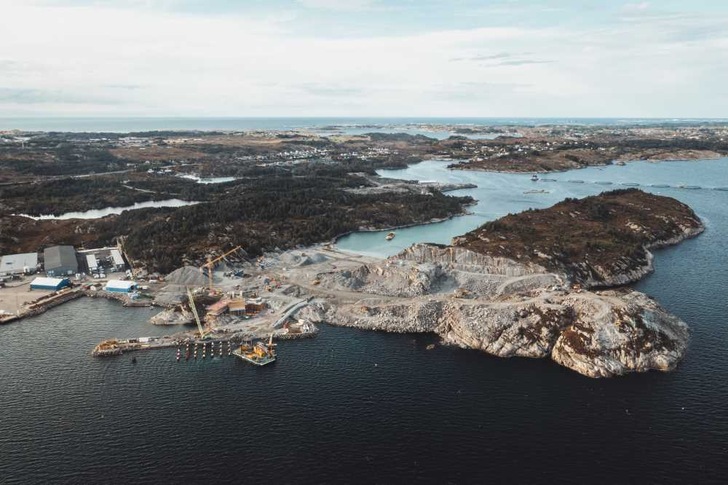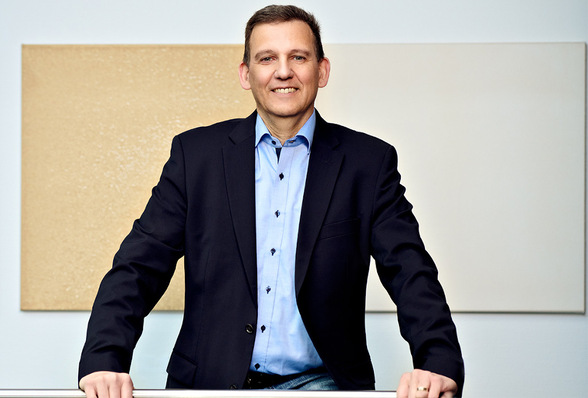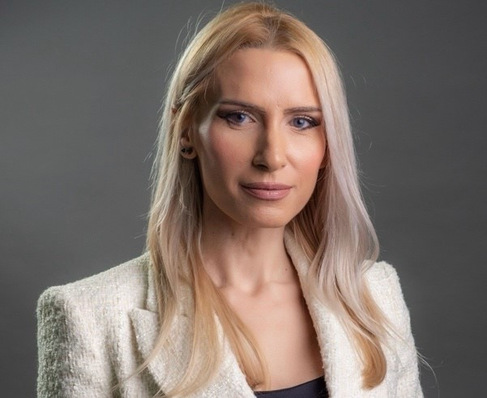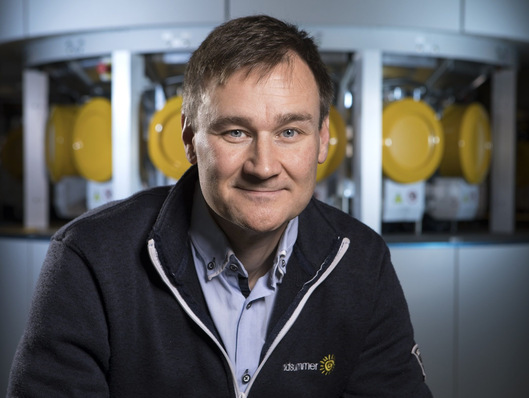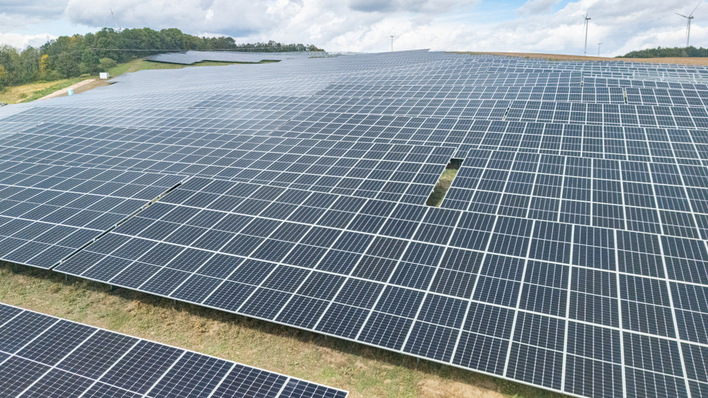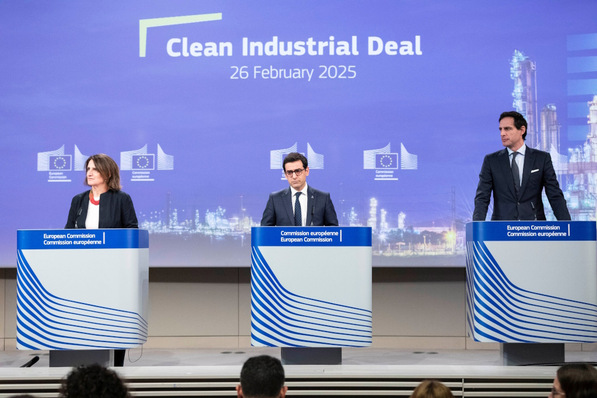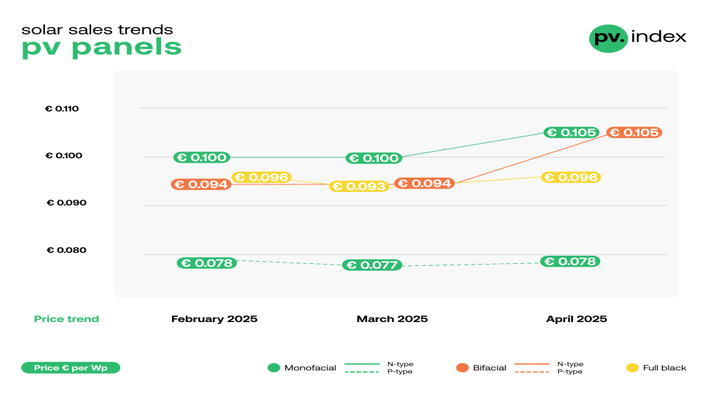By Norwegian standards, the sea off Bergen is calm on this clear winter day. The sun comes through again and again, countless small rocky islands, colorful wooden houses with jetties, white mountains in the background, an idyllic picture book world. But the waves during the one-and-a-half-hour boat trip through the Hjeltefjord are quite something. Then in Øygarden again solid ground of granite under feet plus "large station" for the traveled German journalist group with specially hoisted Europe, Germany and Norway flag before building containers. Around them dozens of caterpillars, cranes, containers and hooded construction workers in bright yellow protective vests with jackhammers. In the meantime, snow has begun to fall.
800,000 cubic meters of rock are currently being moved here with heavy equipment. Several sheet piles for a ship's pier have been driven, the first foundations for buildings have been laid, areas for storage tanks have been leveled, and further back a large hole for a pipeline is being dredged. "We are ahead of schedule," says project manager Sverre Overå happily. By 2024, everything should be ready and "Northern Lights" should start. For the first time, liquefied CO2 will then be delivered on a large scale by tanker, temporarily stored and deposited in a depleted oil field more than 2.5 kilometers below the seabed via a 100-kilometer-long offshore pipeline.
The injected liquid CO2 is trapped by a porous layer of sandstone and mineralizes
Not only Overå but also Kari-Lise Roervik, a geologist and expert on CCS (carbon capture and storage) from the state agency Gassnova, emphasize that the CO2 can be safely disposed of there. The injected liquid CO2 is trapped by a porous layer of sandstone and mineralizes over time, he said. Even at higher pressures, the CO2 cannot escape because it is covered by the kilometer-thick layer of rock. In addition, the owners of Northern Lights, Equinor, Shell and Total Energies, have decades of experience in capturing and re-injecting CO2 from natural gas production underground. Residual risks, such as CO2 escaping through existing wells, can be managed through permanent monitoring of the geology, he said. Incidentally, there is no broad protest movement against the final storage of CO2 in the North Sea in Norway. At the press trip organized by the Norwegian government, for example, a representative of the environmental protection organization Bellona broke a lance for the project. "Norway has stored CO2 underground for 25 years without any leaks," also emphasized Amund Vik, state secretary at the Norwegian Ministry of Oil and Energy.
In December 2020, the Norwegian parliament gave its blessing to the billion-euro start-up funding for "Northern Lights" and the large-scale CCS project "Longship" behind it. The aim is to put the Scandinavian country and Europe on course for climate neutrality and to develop a promising business model for the disposal of climate-damaging CO2 with the help of know-how from oil and gas production. The idea is that anyone who wants to get rid of their carbon dioxide in Europe can do so for a fee in Norway.
Also interesting: Statkraft supplies solar and wind power on a large scale
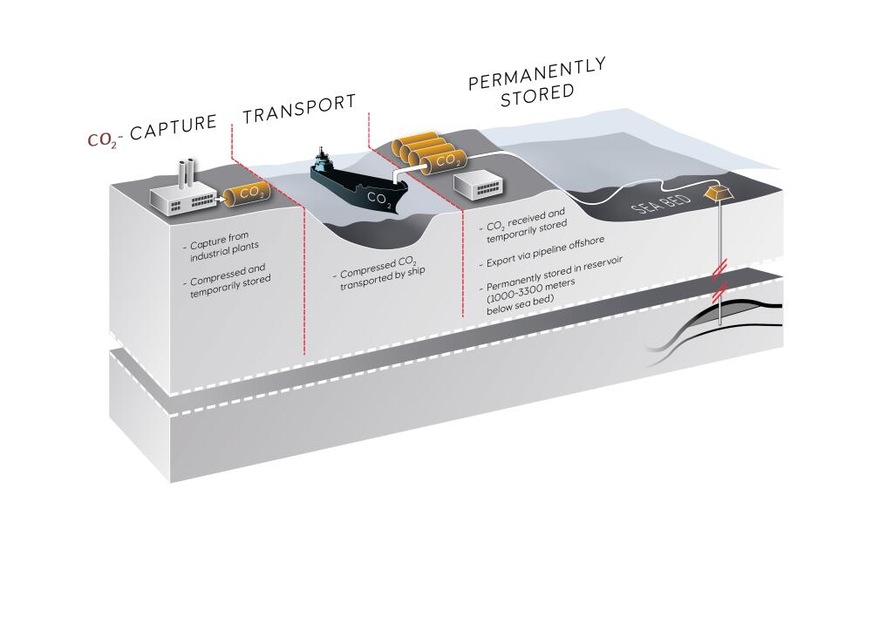
Equinor
The funded project is now starting with a waste incineration plant near Oslo and a cement plant on the Skagerak, in the south of Norway. At first glance, the futuristic facade of the waste-to-energy plant of the Finnish energy company Fortum in Varme looks more like a museum, were it not for the tall chimneys. The plant feeds into the Norwegian capital's 600-kilometer district heating network and covers around 20 percent of Oslo's heating load. Around 400,000 metric tons of carbon dioxide a year are to be separated from the flue gases using the amine process, liquefied and transported by e-trucks to the port of Oslo. From there, it will be transported by ship to Øygarden.
Because about half of the biowaste is incinerated, Varme even calculates with negative CO2 emissions via the CCS process. However, this is not yet the case. At present, only a small pilot plant for CO2 capture is running in a container. Gerner Bjerkas, project director at Fortum, reports that, among other things, efforts are currently being made to obtain further funding in addition to the 300 million euros already promised from the Longship pot. But despite the construction delays, he sees a bright future for the combination of CCS and waste incineration. "The process is suitable for about 500 waste incineration plants in Europe," Bjerkas says.
50 percent CO2 captured at new plant of Heidelberg Cement
Christoph Beumelberg, spokesman for Heidelberg Cement, is also counting on a multiplier effect. Through its Norwegian subsidiary Norcem, the company operates the country's largest cement plant in the port city of Brevik, with an annual production capacity of 1.3 million tonnes. Also 400,000 metric tons of carbon dioxide a year, around 50 percent of the output, is to be captured from the plant, liquefied and loaded onto tankers from 2024. At the moment, the plant is being converted accordingly during ongoing operations. The investment costs amount to around 350 million euros. 85 percent of this is being financed by the Norwegian government through Longship. Beumelberg sees the converted Breviker plant as a blueprint for the Dax Group's other cement plants worldwide in the future and regards CO2-free building materials as the market of the future. He is also counting on savings in the cost of CO2 certificates. Already recently, the prices for EU emission certificates climbed to over 85 euros - from around 100 euros, CCS is considered economical.
Did you miss that? Zero emissions by 2050 is not enough for most developed countries
The Norwegians have their sights firmly set on European countries, especially Germany, when it comes to the future business of CCS, especially the final storage of CO2. For one thing, there are many factories in Germany whose production processes cannot be decarbonized without CCS. For another, the capture and storage of CO2 is not exactly popular in Germany. Years ago, the environmental movement mobilized against it, pointing to the risks of possible CO2 leakage and the lack of an effective contribution to climate protection. A pilot project by the GFZ German Research Center for Geosciences for underground carbon dioxide storage in Ketzin, Brandenburg, was discontinued in 2017. The Carbon Dioxide Storage Act effectively prevents storage of the climate gas, including on German seabed.
CO2 storage volume of 80 billion tons
But now there is some tailwind for CCS, including in this country. "We are committed to the need for technical negative emissions as well and will develop a long-term strategy for dealing with the approximately 5 percent of unavoidable residual emissions," reads the coalition agreement of the new "traffic light" coalition. In addition, the German government announced last early summer that it would ratify Article 6 of the London Protocol and adapt national legislation to facilitate cross-border CO2 transport for storage under the seabed. Eon also recently took a 25 percent stake in Norway's Horisont Energi to expand its CCS business. Stadtwerke München announced its intention to gradually withdraw from the oil and gas production business in favor of increased investment in CCS capture and storage.
Northern Lights project manager Sverre Overå is also confident. 14 preliminary contracts for final CO2 storage are already signed and sealed, he said during the press trip in December. At any rate, storage space for the climate gas is currently still available, at Northern Lights alone for around five million tons of carbon dioxide per year. In the entire Norwegian North Sea, Gassonova puts the CO2 storage volume - at least theoretically - at a gigantic 80 billion tons. (hcn)
Also interesting: How Germany can become climate-neutral by 2050


